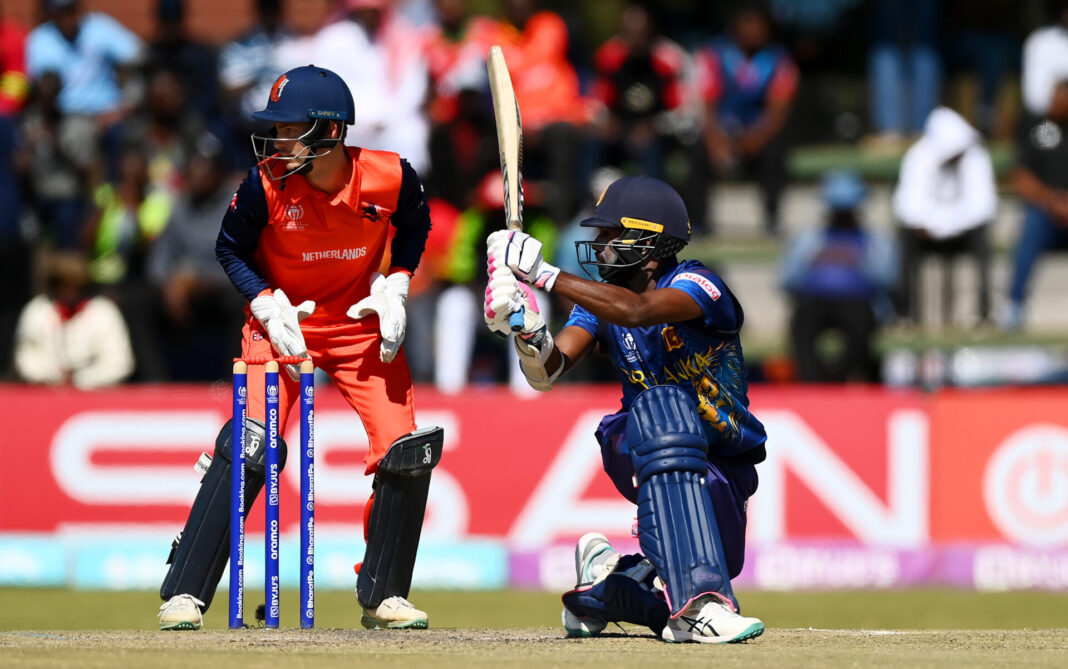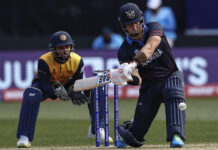There is no question that the success of the Dutch men in qualifying for the 50-over World Cup – and indeed, for the T20 version last November – owes a great deal to their participation in the late-lamented Super League, which saw them play 24 ODIs against Full members over a three-year period.
No other Associate nation has ever had anything remotely approaching such an experience, and its value was repeatedly demonstrated in Zimbabwe.
It is, therefore, not surprising that ICC chairman Greg Barclay should have acknowledged that the Super League was a key factor in the Dutch performances, even if he seems to be a bit vague about how many Associates were actually involved.
But there will, he insists, be no immediate reversal of the appalling decision to abolish it in favour of ‘contextless’ bilateral series, and in another development this week the MCC’s Cricket Committee called for a reduction in the number of Full member ODIs.
The earliest point, it seems, at which the gap left by the abolition of the Super League might be filled is the 2027-31 cycle, by which time there are bound to be many new players in Associate teams.
Outrageously, qualification for the 2027 World Cup will be based on rankings rather than on qualifying tournaments, but with 14 teams taking part there will certainly be at least two Associates in the mix.
There are two aspects to the issue of what happens in the next four years: how are the leading Associates to have any chance of moving up the rankings and thereby qualifying for the World Cup, and how are they to be truly competitive in the Cup itself if they are denied the sort of opportunity that the Netherlands had through the Super League?
That is not to deny the value of League 2, where from February next year the top eight Associates will be playing each other on a regular basis, but that is not the same as facing South Africa or New Zealand on their own turf, or taking on England or Pakistan at home – which also, of course, provides an outstanding opportunity to showcase the sport in countries where its promotion remains a huge challenge.
We know from history that the Full members are extremely resistant to playing against the top Associates: outside the Super League, there were only six ODIs between a Full member and an Associate between the end of the 2019 World Cup and the start of the recent Qualifier, five of them involving the UAE and either Ireland or the West Indies, the other between New Zealand and Scotland.
Nine of the twelve Full members played no such fixture at all, and although it might be claimed that the Covid pandemic was a factor in this, in the previous four-year cycle three (India, Pakistan and South Africa) never faced an Associate in an ODI, while England and Australia did so just once, against Ireland during that country’s preparation for Full membership.
Even Ireland and Afghanistan, no strangers to the obstacles facing the Associates, have been scarcely more forthcoming than the Full members of longer standing.
Clearly, something needs to be done if the progress made by the Dutch through the Super League is not to stagnate, and other countries are to have comparable opportunities.
It’s not too hard to think of a structured solution.
There are currently twelve Full members, and eight Associates with ODI status.
Suppose there were a requirement that every Full member should play one three-match ODI series against an Associate member in each calendar year: that would mean that over two years every Associate would play three such series, nine ODIs against Test-playing countries, and 18 over the four years of the cycle.
No doubt the Full members would object that the Future Tours Programme is already full, and that it would cost them a great deal of money.
But would it really be an onerous imposition to play three additional matches a year? Really?
As for the money, which we know to be the most important consideration in the minds of many cricket administrators, this difficulty could be resolved if the ICC were to create an ODI Development Fund, top-slicing its revenue so that it could subsidise the participants in each series to the tune of, say, $600k.
Twelve series a year would therefore cost the ICC $7.2 million a year, or about 1.2% of its estimated $600 million annual income, not counting the additional income it will attract through commercial and sponsorship deals from global tournaments.
It’s not as if this would be charity: it is in the ICC’s interest that Associates should perform as well as possible on the global stage, and if it is serious about its professed mission to grow the game – something which we have strong grounds for questioning – then this would be an excellent way of achieving both.
Whether the ICC Executive Board has the vision or the commitment to the game as a whole to embrace such a scheme is, of course, another matter.
You’re reading Emerging Cricket — brought to you by a passionate group of volunteers with a vision for cricket to be a truly global sport, and a mission to inspire passion to grow the game.
Be sure to check out our homepage for all the latest news, please subscribe for regular updates, and follow EC on Twitter, Facebook, LinkedIn and YouTube.
Don’t know where to start? Check out our features list, country profiles, and subscribe to our podcast.
Support us from US$2 a month — and get exclusive benefits, by becoming an EC Patron.







